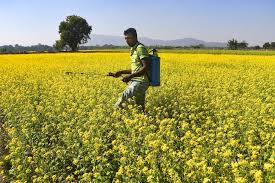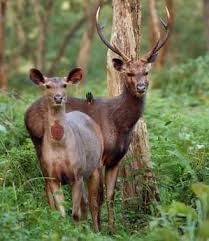Motor Vehicle Aggregator Guidelines (MVAG) 2025
- 05 Jul 2025
In News:
The Ministry of Road Transport and Highways has released the Motor Vehicle Aggregator Guidelines (MVAG), 2025, updating the 2020 norms to accommodate evolving urban transport trends — including bike taxis, electric vehicles (EVs), and app-based autorickshaws.
Overview
- Legal Basis: Formulated under the Motor Vehicles Act, 1988, MVAG provides the regulatory foundation for digital ride-hailing platforms such as Ola, Uber, and Rapido.
- Issuing Authority: Ministry of Road Transport and Highways, Government of India
Key Provisions of MVAG 2025
Driver Welfare and Remuneration
- Revenue Sharing:
- Drivers using own vehicles must receive minimum 80% of the fare.
- For aggregator-owned vehicles, the share must be at least 60%.
- Insurance Requirements:
- Health cover of ?5 lakh
- Term life insurance of ?10 lakh for each driver
- Skill Enhancement: Drivers in the lowest 5% rating bracket to undergo quarterly training
Passenger Safety and Accountability
- Travel Insurance: Mandatory coverage of ?5 lakh per passenger
- Complaint Resolution:
- Issues must be addressed within 3 working days
- Aggregators must notify passengers of outcomes
- Fare Transparency: Charges apply only from pick-up to drop-off location
Fare Regulation and Surge Pricing
- Base Fare Governance: State governments to decide base fare for each vehicle type
- Dynamic Pricing Limits:
- Aggregators may charge as low as 50% below base fare or up to 2x the base fare cap
- Designed to curb excessive surge pricing and ensure fare predictability
Cancellation Penalties
- Symmetrical Accountability:
- 10% penalty (capped at ?100) for riders or drivers cancelling without valid reason
- Acceptable cancellation grounds must be clearly listed on platforms
Legitimisation of Bike Taxis
- Policy Recognition:
- For the first time, private two-wheelers (non-transport motorcycles) may be used for commercial ride services, pending state-level approval
- Legal clarity for platforms operating in regulatory grey zones
EV Integration and Inclusivity
- EV Adoption Targets: States may enforce annual targets for aggregator fleets to switch to electric vehicles
- Accessible Vehicles Mandate: Aggregators must include vehicles equipped to serve persons with disabilities (Divyangjan)
Enhanced Driver Onboarding Standards
- Screening and Health Protocols: Mandatory police verification, medical fitness, and psychological evaluation before onboarding
- Training Mandates: Induction training for new drivers and annual refresher programs for all
Grievance Redressal & Licensing
- Mandatory Officer Appointment: A Grievance Redressal Officer must be designated with contact details published on the platform
- Centralised Licensing Portal: A unified digital portal to streamline aggregator licensing, renewals, and deposit management
Enforcement and Penalties
- Penalty Range: Fines for non-compliance range from ?1 lakh to ?1 crore
- Escalation for Repeat Offences: Repeat violations can lead to license suspension (up to 3 months) and possible revocation
Significance of MVAG 2025
- Aligns India’s mobility ecosystem with sustainable transport goals, passenger safety, and driver welfare
- Encourages EV transition, inclusive access, and regulated digital transport economy
- Brings regulatory clarity for emerging services like bike taxis
India’s Agri-Export Regime

- 17 May 2025
In News:
India has recently inked free trade agreements (FTAs) with the United Kingdom, a trade and economic partnership agreement with the EFTA bloc, and concluded terms of reference for an India-US trade agreement. It is also negotiating with the European Union. In short, India is racing to plug itself into shifting global supply chains. Yet amid all the flashbulbs and photo?ops, India’s agriculture sector remains conspicuously absent.
Definition:
India’s agricultural export regime comprises the policies, institutions, and infrastructure that regulate and promote the export of farm produce.
Present Status:
- In 2023–24, India’s agricultural exports declined to $48 billion, down from $52 billion in 2022–23.
- Basmati rice accounts for approximately 21% of the total agri-export value.
- Bodies such as APEDA and branding tools like ODOP-GI tags play a role in market promotion.
- Agricultural products have been kept largely outside recent FTAs due to concerns over food security, rural employment, and political sensitivity.
Key Challenges in India’s Agri-Export Ecosystem
- Limited FTA Coverage:Agriculture is often excluded or granted extended transition periods in trade agreements, limiting access to foreign markets.
- High Rejection Rates:Several Indian agri-products face export rejections due to non-compliance with Sanitary and Phytosanitary (SPS) norms and pesticide residue limits (e.g., mangoes, groundnuts).
- Governance Gaps:With agriculture under the State List and trade under the Union List, there is often a disconnect in policy coordination, affecting timely decisions.
- Lack of Value Addition:A significant share of exports is in the form of raw produce, with insufficient emphasis on processed or brandedagri-goods.
- Infrastructure Deficits:Inadequate cold storage, pre-cooling facilities, and container depots—particularly in landlocked states like Uttar Pradesh and Madhya Pradesh—hinder export readiness.
- Subsidy Distortions:Input subsidies on power, water, and fertilizers disincentivize farmers from diversifying to export-oriented, high-value crops.
Strategic Roadmap for Agri-Export Growth
- Boost Value Addition:
- Establish agro-processing zones near APMCs.
- Incentivize processed exports through output-linked schemes.
- Strengthen Policy Coordination:Form a National Agri Trade Council involving the Centre, States, APEDA, FSSAI, and industry stakeholders to harmonize regulations and streamline decision-making.
- Reform Subsidy Framework:Transition to Direct Benefit Transfers (DBT) instead of input-based subsidies to encourage crop diversification and resource efficiency.
- Leverage Agri-Tech Solutions:Expand use of AI tools for crop health monitoring, promote vernacular advisories, and enhance access to real-time market data.
- Upgrade Infrastructure:
- Deploy GIS-based mapping for tracking surplus zones and export potential.
- Develop pre-cooling chains, inland ports, and container hubs in the hinterlands.
- Improve Connectivity in Interior States:Focus on building logistics networks in non-coastal states like UP and MP to integrate them with export supply chains.
Sambar Deer

- 29 Dec 2024
In News:
Three poachers were arrested for killing a sambar deer in the Daying Ering Memorial Wildlife Sanctuary (DEMWS), East Siang district, Arunachal Pradesh.
Action Taken:
- Poachers Arrested: The poachers were booked under the Wildlife Protection Act 1972 and Arms Act 1959. The seized articles were handed over to the police, and a FIR was registered.
- Sanctuary Protection Efforts: The Divisional Forest Officer (DFO) emphasized the need for intensified surveillance to prevent further hunting incidents. Public cooperation was urged to report such incidents for prompt action.
About Sambar Deer:
- Scientific Name: Rusa unicolor.
- Native Regions: Found across the Indian subcontinent and Southeast Asia.
- Other Names: Known as Jarao in Nepal and Four-eyed deer in China.
- IUCN Red List: Listed as Vulnerable.
Key Features:
- Size: Stands between 1.2–1.4 meters at the shoulder.
- Weight: Can reach up to 550 kg, making it the largest oriental deer.
- Coat: Dark brown with a ruff around the neck, and unspotted.
- Antlers: Male sambar bears long, rugged antlers with three points (tines).
- Behavior: Elusive, most active at dusk and night.
Habitat:
- Water Dependency: Always found near water sources.
- Habitat Range: Dry deciduous forests, rainforests, and mixed forests.
- Social Structure: Often found alone or in small groups.
About Daying Ering Memorial Wildlife Sanctuary (DEMWS):
- Location: Situated in East Siang district, Arunachal Pradesh.
- Established: Originally established as Lali Wildlife Sanctuary in 1976, renamed Daying Ering Memorial in 1986.
- Climate: Tropical, receiving both north-east and south-west monsoons.
- Waterways: Home to the Siang River, one of Arunachal's major rivers.
Flora:
- Vegetation: Composed mainly of riverine plains with a variety of thatch and grasses.
- Trees: Includes scattered patches of trees such as Termenelia myriocarpa, Dillenia indica, Albizia spp., and Bombax ceiba.
Fauna:
- Mammals: Includes Hog Deer, Wild Pig, Tiger, and Elephant.
- Birds: Over 150 species of birds, including endangered species like the White-Winged Wood Duck and Bengal Florican.
